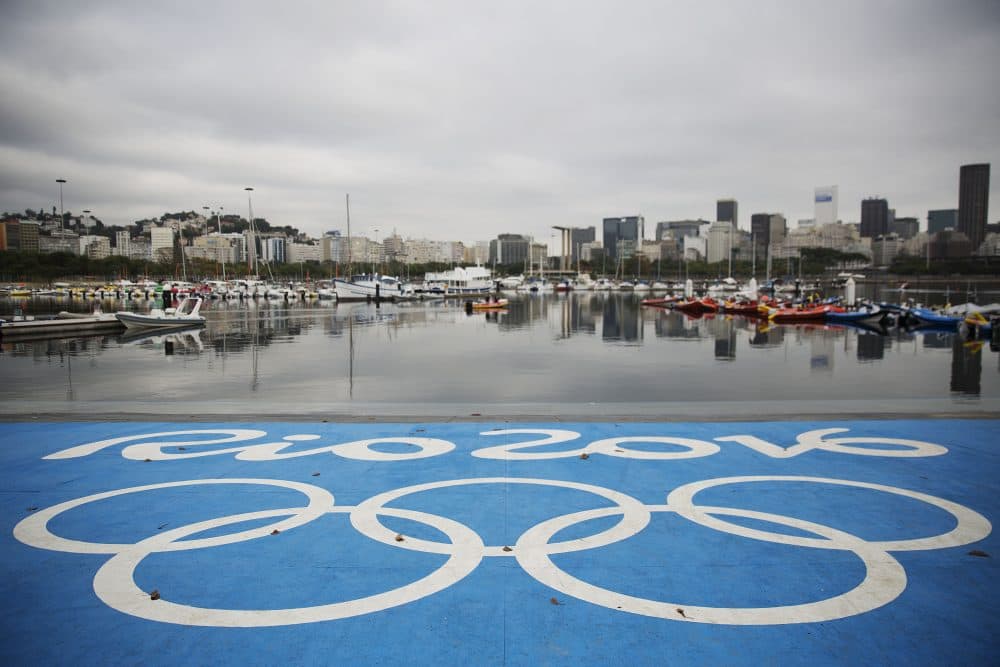Advertisement
Olympic Rules For Transgender Women Athletes Are In Flux

Will we see a transgender athlete compete in the Rio Olympics? Experts who advise the International Olympic Committee (IOC) on trans policies have told me transgender men and women are there, among the more than 11,000 competitors. They are participating under guidelines the IOC adjusted less than a year ago that no longer require athletes to have surgery to compete.
But now, the commission that set those rules is looking at another revision. The issue: Just how much testosterone should trans women, and perhaps all female athletes, be allowed to maintain?
The guidelines agreed to in November said that athletes who transition from male to female must demonstrate that their testosterone levels are below 10 nanomoles per liter of blood for at least 12 months prior to her first competition.
But some members of the IOC's Medical and Scientific Commission say 10 is not low enough. There's a move to cut the upper limit in half, or even bring it down to 4 nanomoles per limit.
The new cap would be closer to the 3 nmol/L, which is the upper range for most natal females. Ten is on the lower end for natal males.
"I want a number that is fair and medically achievable," said Dr. Joshua Safer, an endocrinologist who treats transgender patients at Boston Medical Center and who spoke to the IOC medical commission at a meeting in May. "We don't want to create a rule that people can't meet."
Safer agrees that 10 is too high. He says 4 might be a number that is fair for all women, and a number that transgender athletes could sustain. Suppressing testosterone in transgender women (who have not had surgery to remove their gonads) so that their levels stay below 3 might be difficult.
"There's no such thing as a level playing field," said Dr. Myron Genel, a member of the IOC medical commission who has studied gender in sports since the mid-1980s. There's a vast range in height, for example, both among men and women, as well as between the genders. "But you hope you’d be able to mitigate any excessive advantage that someone has by their levels of testosterone."
Genel suggests 5 nmol/L, but concedes the number is somewhat arbitrary. Genel says he's sure that having more testosterone gives an athlete some advantage, but he says no one knows how much.
In July 2015, the international Court of Arbitration for Sport (CAS) issued a two-year suspension of the 10 nmol/L testosterone limit for female athletes with hyperandrogenism, a condition that leads to higher testosterone levels in women. The CAS said there was no reliable proof that testosterone caused improved athletic performance.
So South African runner Caster Semenya, who is presumed to have more natural testosterone than most women, will not have to be under that limit.
If the IOC lowers allowed levels for trans women athletes, some advisers to the IOC want to make sure it applies to Semenya and anyone who competes as female.
"I'm OK with any number between 3 and 10," said Joanna Harper, a trans woman runner who advises the IOC, "as long it’s the same number for all women athletes."
There are a lot of possible complications here.
There's the issue of not knowing how many nanomoles of testosterone enhance performance, or by how much. There's no evidence about whether the difference is greater in some sports than in others. Testosterone levels vary during the day and after athletic performance, so when should tests be done? And what is a standard testosterone level for trans women undergoing hormone therapy?
"We’re really handicapped by is how little data there is," Genel said.
There's a lot of discussion about how to measure the difference between male and female athletes and how to make competition fair for females athletes who go through puberty as women and do not use hormones to increase their muscle mass or the length and strength of their bones.
The IOC medical commission is expected to issue new guidelines this fall.
The IOC press office declined to comment on the status of discussions, as did an attorney who advises the commission.
Harper, the trans woman runner, says that whatever happens next will not be a final rule.
"These are living documents, something agreed to by all participants; given all the things one needs to consider, we would be foolish to say that any meeting will come up with rules that will last forever," Harper said. "It’s appropriate that these rules be looked at carefully on an ongoing basis and adjusted as needed."
In the meantime, Harper says it's time for other national and international sports federations to follow the IOC's current rule and drop the requirement that transgender athletes have anatomical surgery if they want to compete.
"I know trans women who show up for local road races and are told they can’t compete in the women's division because they haven't had surgery," Harper said. "It's really important for these things to trickle down."
